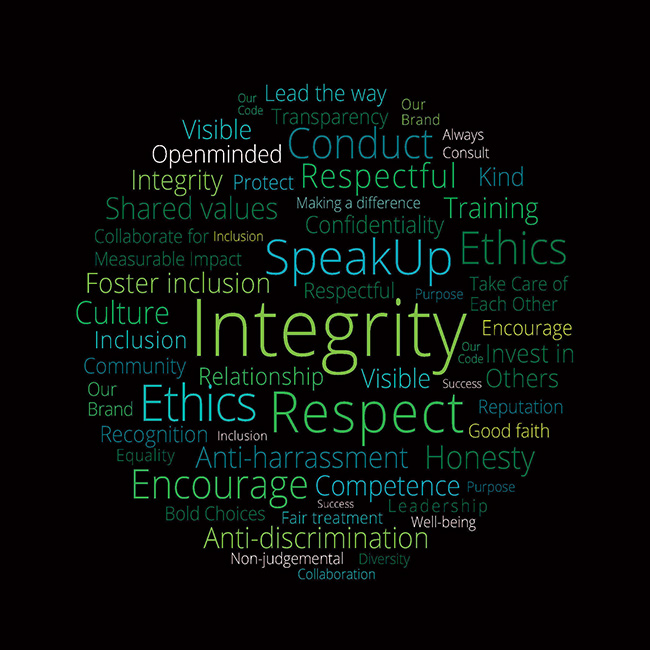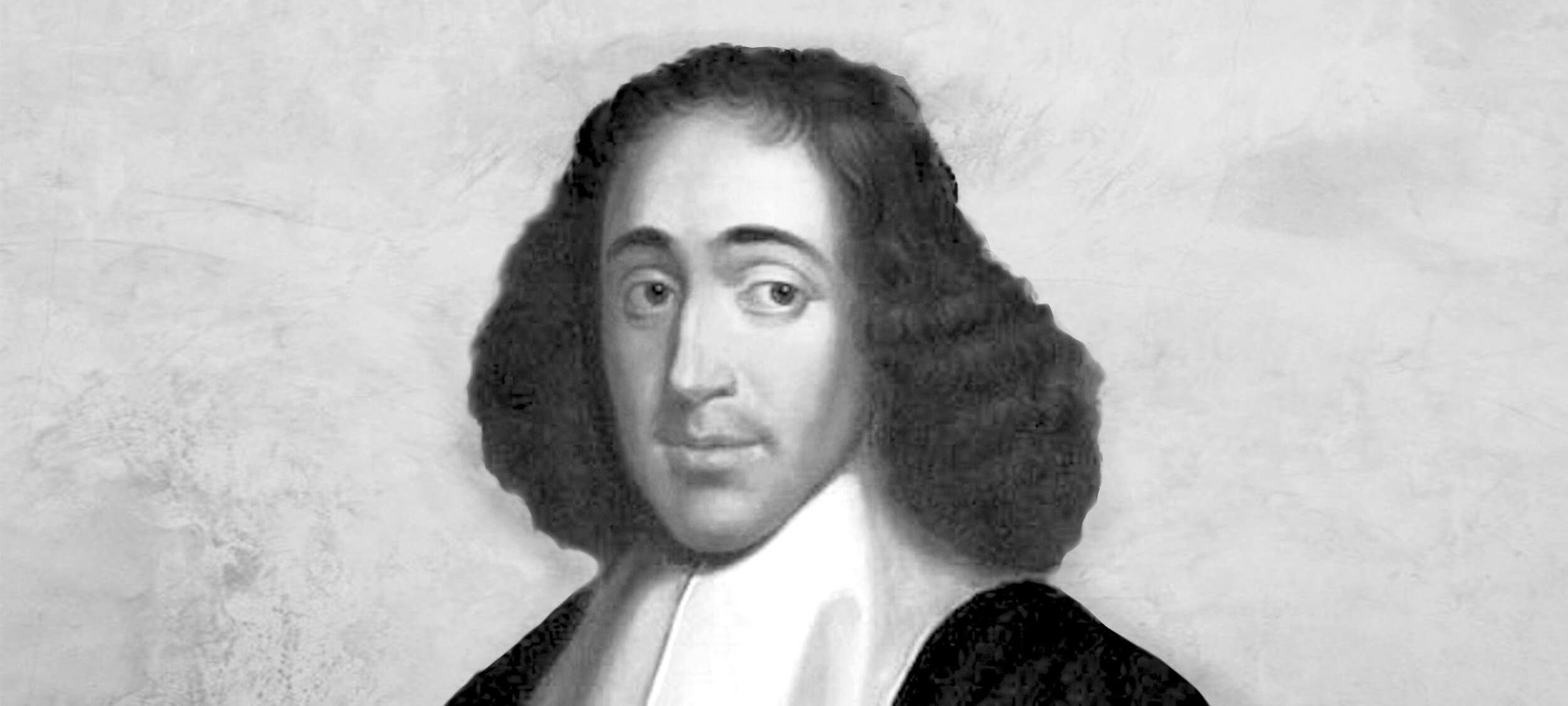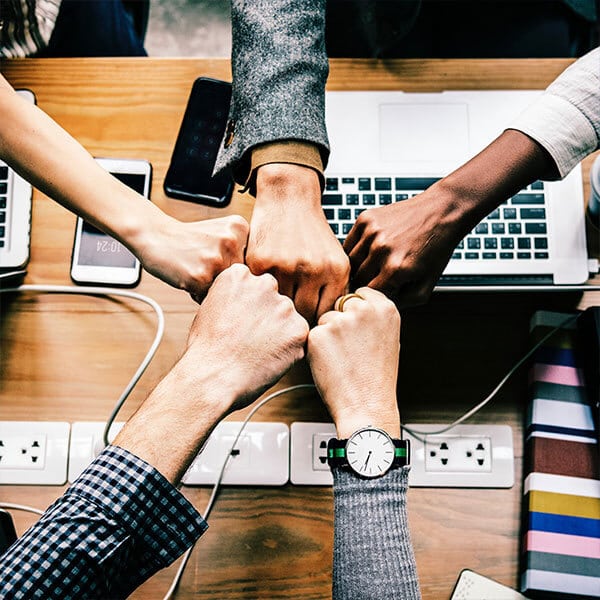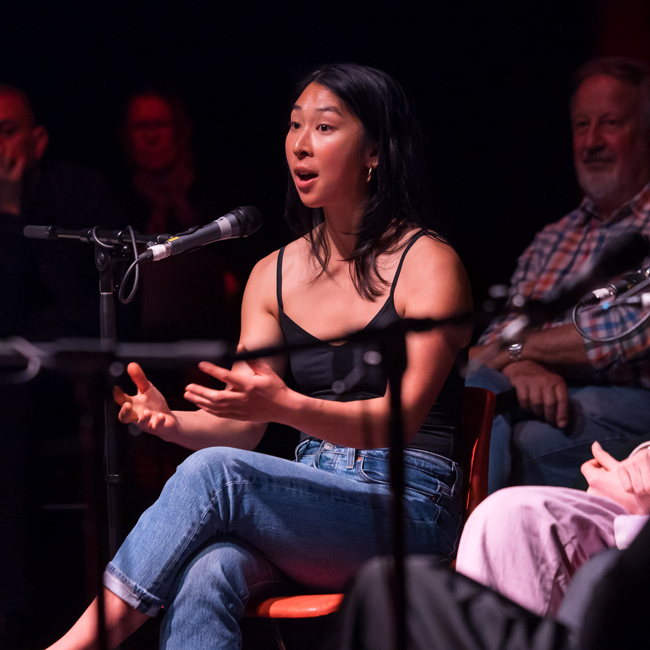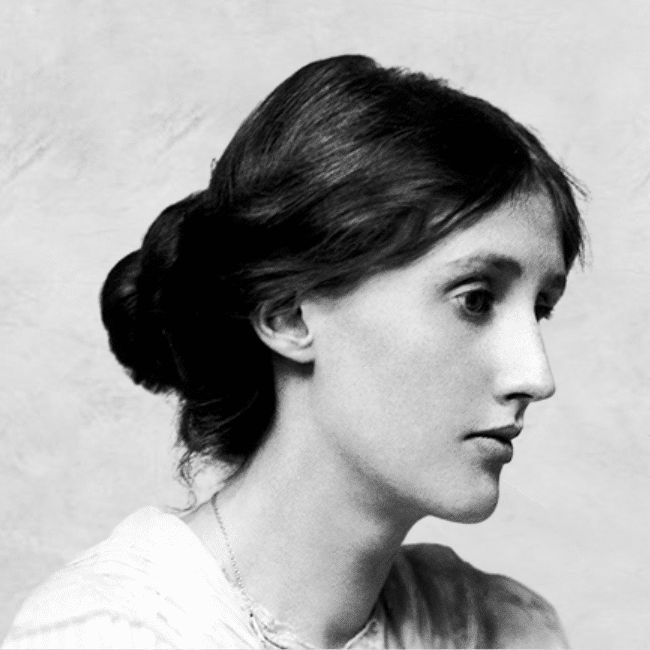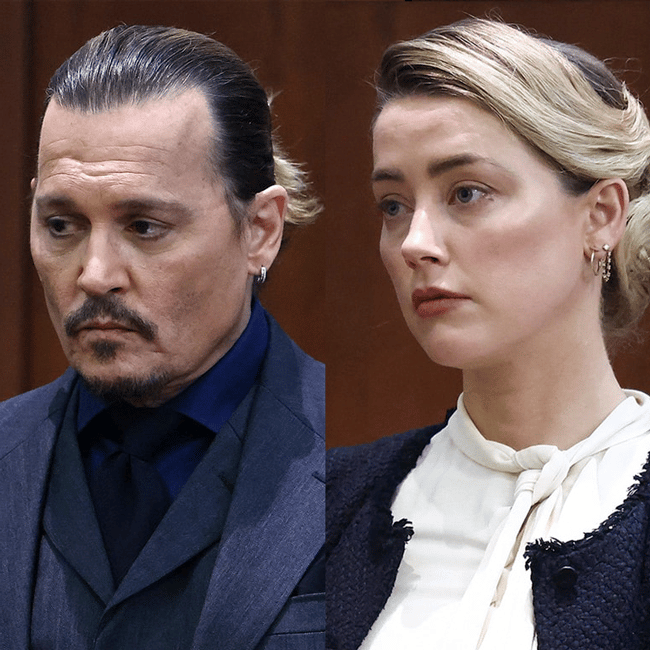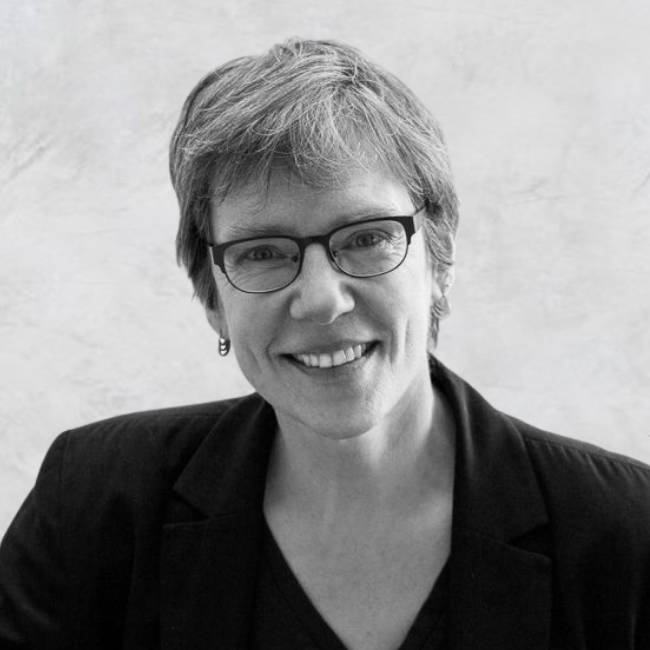Unconscious bias: we’re blind to our own prejudice

Unconscious bias: we’re blind to our own prejudice
Opinion + AnalysisBusiness + LeadershipRelationships
BY Jack Hume The Ethics Centre 28 SEP 2016
For the most part, we respect our colleagues and probably wouldn’t ever label them ‘sexist’ and certainly not ‘racist’. But gender and ethnic diversity in workplaces shows something is amiss.
Women fare worse than men across most measures of workforce equity. The Australian Government’s Gender Equality Agency report notes women who work full-time earn 16 percent less per week than men, constitute 14 percent of chair positions, 24 percent of directorships and 15 percent of CEO positions.
Women lose at both ends of the career lifecycle. Their average graduate salaries are 9 percent less than their male equivalents’ and their average superannuation balances 53 percent less.
Sociology, psychology and gender and cultural studies have all weighed in on the multiple causes of these inequalities, with much of the conversation converging around the role of ‘unconscious bias’ in decision-making.
Applicants with Indigenous, Chinese, Italian and Middle Eastern sounding names were seen to be systematically less likely to get callbacks than those with Anglo-Saxon names.
Studies in which people are asked to evaluate the capabilities and aptitudes of a job candidate show effects of implicit biases on job assessment. In a study mimicking hiring procedures for math related jobs, male candidates fared so much better than women that lower-performing males were chosen over better female candidates.
Similar effects have been seen with regard to race. In Australia, applicants with Indigenous, Chinese, Italian and Middle Eastern sounding names were less likely to get callbacks than those with Anglo-Saxon sounding names.
When biases become socially reinforced, individuals can come to see them as ‘reality’. Studies have shown women tend to believe they are worse at math than men and this belief has a negative impact on their performance.
In one study, a group of women were asked their gender prior to math tests and performed worse than the group who weren’t asked to disclose it. This phenomenon is called the ‘stereotype threat’ and it extends to racial beliefs. Two decades ago, a landmark study found that asking students of colour to identify their ethnicity prior to a test resulted in a substantially poorer grade.
This evidence suggests human resource departments might consider adopting hiring procedures that don’t require race, gender or even an applicant’s name be stated. Of course, at some point, the candidate will need a face-to-face interview, so this isn’t a perfect solution to bias- but it does reduce its influence.
Volunteering to learn more about diversity signifies a more general willingness to open organisational culture to people from different backgrounds.
Alongside systematic and procedural changes, we can help cultivate organisational willingness to combat inequality through diversity training. These training programs rose to prominence around a decade ago as a result of a wave of lawsuits against major US companies. However, as Frank Dobbin and Alexandra Kalev explained in an article for the Harvard Business Review, they were dazzlingly unsuccessful — resulting in negative outcomes for Asians and Black women, whose representation dropped an average of five and nine percent, respectively.
Dobbin and Kalev suggest the major reason these programs failed is probably because they were usually mandatory. This suggests they were motivated more by risk aversion — ‘discriminate and you’ll be fired’ — than a genuinely held belief diversity is valuable. It’s not surprising systematic change didn’t occur under such conditions.
At the same time, companies who used voluntary diversity programs saw increases in black, Asian and Hispanic representation – even as the average was decreasing nationwide. Volunteering is most likely motivated by a belief that diversity is genuinely valuable — factors that seem far more effective in influencing workplace diversity, perhaps because they are genuine.
Science is yet to tell us whether we can actually reduce biases let alone erase them altogether. All the same, we can begin to mend workplace inequalities by actively engaging peoples’ will to change.
Ethics in your inbox.
Get the latest inspiration, intelligence, events & more.
By signing up you agree to our privacy policy
You might be interested in…
Reports
Business + Leadership
The Ethical Advantage
Opinion + Analysis
Politics + Human Rights, Relationships
We’re being too hard on hypocrites and it’s causing us to lose out
Explainer
Health + Wellbeing, Relationships
Ethics Explainer: Values
Opinion + Analysis
Relationships
Big Thinker: Baruch Spinoza
BY Jack Hume
Jack studied Philosophy and Psychology at the University of Sydney, completing his Bachelor of Arts in 2017 with First Class Honours. He has supported The Ethics Centre's Advice & Education team in research capacities over the last two years, contributing to their work on cognitive bias in decision making, and ethics education in financial services. In 2018, he joined the Centre full-time as a Graduate Consultant. He brings insights from contemporary political philosophy, moral psychology and skills in qualitative research to consulting projects across a variety of sectors.
BY The Ethics Centre
The Ethics Centre is a not-for-profit organisation developing innovative programs, services and experiences, designed to bring ethics to the centre of professional and personal life.
Want men to stop hitting women? Stop talking about “real men”
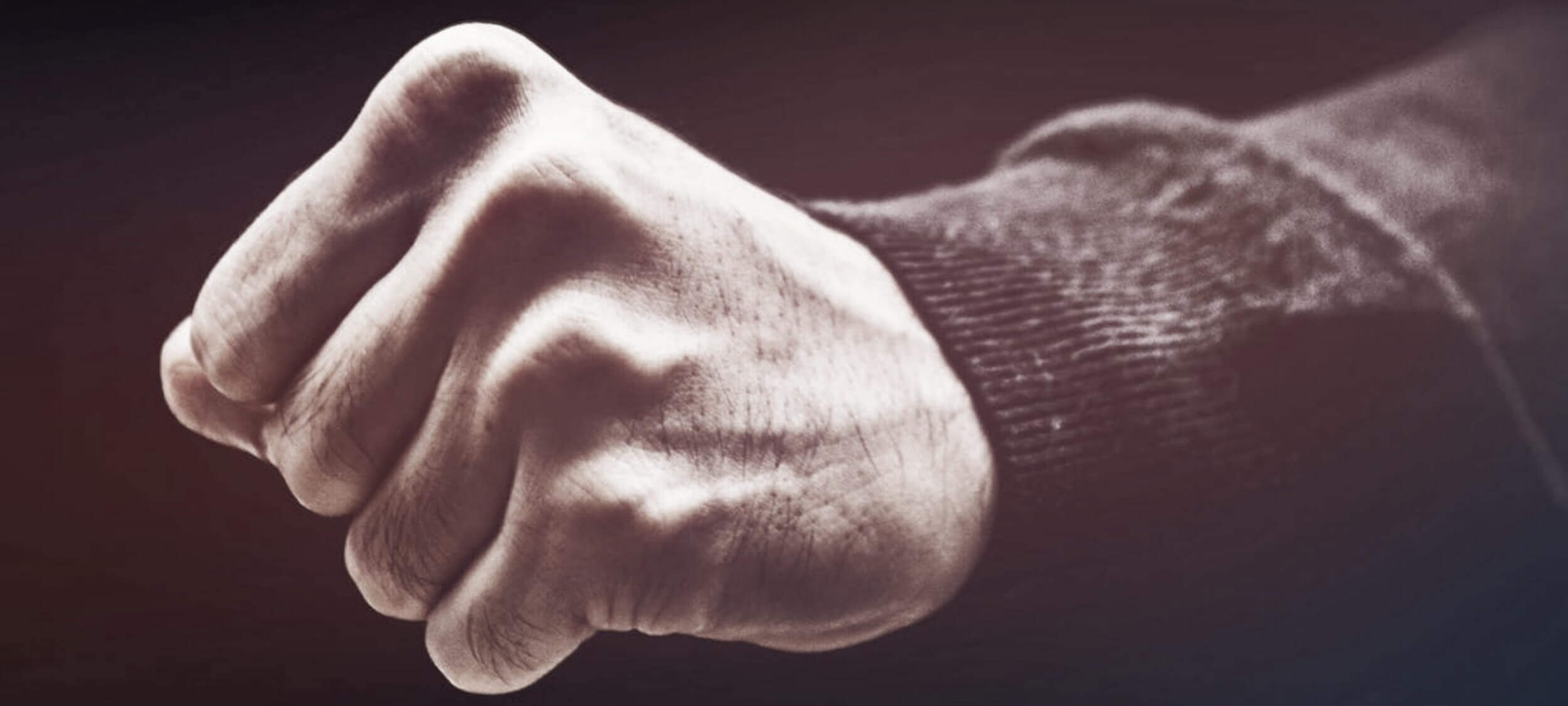
Want men to stop hitting women? Stop talking about “real men”
Opinion + AnalysisRelationships
BY Michael Salter The Ethics Centre 28 SEP 2016
“Real men don’t hit women,” declared Prime Minister Malcolm Turnbull in 2015, before announcing a significant domestic violence funding package.
This slogan was also routinely utilised by former Prime Minister Tony Abbott and is a long-standing feature of prevention and education campaigns around the world.
The message is one many people support. On the face of it, it serves the dual purpose of shaming domestic violence perpetrators and reinforcing the masculinity of non-violent men.
It’s interesting this message is most often delivered by stereotypically successful men such as politicians, sports stars and celebrities. In this way, men and boys are encouraged to see refraining from bashing women as another masculine accomplishment that deserves recognition and acclaim.
We are assured we can be “real men” and enjoy all the perks of masculinity without needing to resort to violence against women. Apparently, not hitting women makes our masculinity even more ‘real’.
On closer inspection, it seems peculiar to celebrate men and boys for not engaging in obviously illegal and harmful behaviour. What is it about violence against women that prompts us to proclaim the masculinity of men who eschew it?
Sexism is so pervasive in our society it becomes invisible, like the air we breathe. It produces the conditions in which domestic violence takes place and then seeps into the solutions we propose for domestic violence. It would be inappropriate to tell white supremacists they can still be ‘racially pure’ without racial violence. “Real whites don’t hit blacks” might ostensibly be an anti-violence message but it hinges on the very notion of racial purity causing the violence.
In the same way, “real men don’t hit women” only makes sense within the culture of sexism that drives violence against women. Male anxiety about being a “real man” is at the very core of physical and sexual violence.
Men who identify strongly with traditional, stereotypical notions of masculinity are most at risk of perpetrating domestic violence. Boys raised in a culture of masculine entitlement can grow into men who feel disrespected and turn to violence when they don’t receive the status and deference they expect from their partner.
Messages about “real men” are not part of the solution to domestic violence. They are part of the problem. Every Australian man grows up being told “real men don’t hit women”. We are taught “real men” are naturally strong and aggressive, but women are too weak and defenceless to make legitimate targets.
Instead, we are encouraged to direct our violence against each other, usually through sport (or physical combat after a few beers). Manfully protecting women is another way of proving our masculinity to others.
“Real men don’t hit women” suggests violence against women is wrong because it is cowardly. It supports the stereotypical view of women as too weak to defend themselves. In fact, women regularly strike back against domestic violence. As a domestic violence worker said during a research interview recently, “Not all of our DV victims are the meek, quiet woman who doesn’t speak up for herself, you know”.
Women who exercise their right to defend themselves against male violence are often stigmatised. They defy sexist expectations that “real women” are too weak to protect themselves and need a “real man” to rescue them.
We won’t stop violence against women by promoting gender stereotypes. The man least likely to hit or abuse a woman is someone who doesn’t care if he’s a “real man” or not. He’s found fulfilling relationships that don’t depend on other people’s assessments of his masculinity.
The good news is these are exactly the relationships men are looking for. No boy grows up hoping to turn into a violent partner or abusive father. Boys and men want to be part of strong relationships, healthy families and happy communities.
Violence corrodes relationships and leaves men alienated, confused and dependent on empty macho displays for a momentary sense of self-esteem. That’s the cost of worrying constantly about being a “real man”. Leaving that anxiety behind opens up a raft of opportunities for boys and men to engage with the people we care about on the basis of mutual respect.
Male violence is an obstacle to the kinds of lives men want to lead. This is the message we should be taking to men and boys.
If you or someone you know is affected by sexual assault or domestic violence, call 1800RESPECT on 1800 737 732. In an emergency, call 000.
Ethics in your inbox.
Get the latest inspiration, intelligence, events & more.
By signing up you agree to our privacy policy
You might be interested in…
Opinion + Analysis
Relationships
Big Thinker: Baruch Spinoza
Opinion + Analysis
Relationships
Ask an ethicist: How should I divvy up my estate in my will?
Big thinker
Relationships, Society + Culture
Five Australian female thinkers who have impacted our world
Opinion + Analysis
Relationships
Why we find conformity so despairing
BY Michael Salter
Scientia Fellow and Associate Professor of Criminology UNSW. Board of Directors ISSTD. Specialises in complex trauma & organisedabuse.com
BY The Ethics Centre
The Ethics Centre is a not-for-profit organisation developing innovative programs, services and experiences, designed to bring ethics to the centre of professional and personal life.
Send in the clowns: The ethics of comedy

Send in the clowns: The ethics of comedy
Opinion + AnalysisHealth + WellbeingRelationships
BY The Ethics Centre 21 SEP 2016
We’ve all heard jokes that were ‘too soon’ or went ‘too far’. Maybe you laughed hysterically or maybe you were offended. We asked a few comedians how they negotiate the thorny side of humour.
Avoid lazy stereotypes
“It’s easy to be lazy because so much comedy comes from stereotypes … but there is more interesting humour found by digging deeper”, says Suren Jayemanne. By focusing on the absurdity of the stereotype rather than the stereotype itself, you can laugh with the subject of the joke rather than at them.
Jayemanne uses the example of Indian taxi drivers. “The reason is because so many of their qualifications aren’t recognised, so the stereotype is one we’ve imposed on them as a society.” So instead of making fun of Indian cab drivers, he jokes about using them as a chance to get a cheap second medical opinion.
For Karen Edwards, the use of stereotypes really depends on the audience. As an Aboriginal comedian, she thinks stereotypes can be relatable. “I use [Aboriginal] stereotypes in front of our own mob and they find it relatable – if blackfellas won’t be offended by a joke then I’ll run with it.”
This means she still avoids the more offensive, lazy stereotypes, “like petrol sniffers – that’s offensive even if it’s said by an Aboriginal”.
Free speech doesn’t mean you should run your mouth
“Some people think free speech in comedy means they should be able to say anything that pops into their head on stage – that’s crazy to me,” says Tom Ballard.
“The big conversation in comedy right now seems to be about political correctness, the restrictions on free speech, how our jokes reflect on us as comedians and which jokes are worth saying”, he adds. “If we’re talking about stuff about which we have no experience … is our dumb joke worth it given the offence it might cause to people who have?”
The free speech defence can also be used as a cop-out, says Bish Marzook. “The people who are calling out the comedians also have the right to free speech – you have a right to say you didn’t find their joke funny.”
“If you have absolute free speech you’re probably restricting other essential rights as well,” adds Jayemanne.
Punch up, not down
Jayemanne explains how comedians have become mindful of not piling on to groups who are already struggling against social issues. “I think because you’ve got a pulpit to speak from, it’s important to be conscious of who the victim of your joke is.”
“You don’t want to be part of the problem,” says Ballard. Sometimes that means thinking carefully about whether your joke is consistent with the kind of society you want to create. Take Islam, for instance.
“I’m not a fan of religion, I’m an atheist – but I’m also a white man in a climate where apparently 49 percent of Australians support a ban on Muslim immigration… I don’t want to contribute to the victimisation and abuse of those people.”
Comedy takes topics most people would assume are taboo or tragic and turns it into something cathartic.
I ask whether avoiding punching down meant comedians needed to have a kind of ‘oppression hierarchy’ to know who sat below them on the pecking order. Marzook admits it can be hard.
“I identify as a person of colour and a woman, so I know there are things I can say but I also have a lot of privileges people don’t know about.”
“Just because you’re conscious of punching down doesn’t mean you can’t talk about disadvantage,” adds Ballard, whose last show Boundless Plains to Share focused on asylum-seeker politics. “I wanted to talk about refugees… but in terms of the ‘punch’, it was always about the people in power.”
Are some topics off-limits?
Edwards thinks some topics shouldn’t be the subject of comedy. “No matter how funny, there are certain things I’d never touch. I’m not going to make jokes about babies dying… like all the ‘dingo ate my baby’ jokes – why? It’s too tragic.”
For Marzook, it depends on the context – are you saying something funny and thoughtful?
“The reason I went into comedy is to make a point of what’s happening in the world… I would encourage people to tackle hard issues. If it’s racist or untrue then that’s the problem and someone should point it out.”
Ballard thinks the idea of off-limits topics is “a tired angle”.
“We know comedians like Amy Schumer, Jon Stewart and Chris Rock exist – it’s pretty settled that edgy comedy is possible,” he says.
Even so, at a certain point in his last show on asylum seekers, he couldn’t make jokes. “There were some things about the nature of the system that I simply couldn’t make funny and so the show became more earnest and theatrical. At a point I just had to say this is fucked up.”
“I think an ethical comedian is one who listens and takes seriously the possibility of offence.” – Tom Ballard
Jayemanne thinks comedy needs to tackle the hard stuff, and that people want comedians to do so. “Comedy takes topics most people would assume are taboo or tragic and turns it into something cathartic. If you shy away you’re sheltering people, but humour is such an important tool for helping people deal with difficult topics.”
“It helps make the medicine go down,” adds Ballard.
Listen to your audience and be forgiving
“Comedy is about truth and, to an extent, egalitarianism. It’s a social, communal thing,” says Ballard. “I think an ethical comedian is one who listens and takes seriously the possibility of offending – there are things to be learned from the audience.”
Marzook worries comedians will shy away from serious issues because the costs of getting it wrong can be so severe. “Now everyone is so scared of making a mistake, and they should be, but if the consequences weren’t so severe, like online shaming, losing your job… maybe people would be willing to admit they made a mistake and we could move on.
“I guess it’s just about doing your best.”
Ethics in your inbox.
Get the latest inspiration, intelligence, events & more.
By signing up you agree to our privacy policy
You might be interested in…
Opinion + Analysis
Relationships
Struggling with an ethical decision? Here are a few tips
Opinion + Analysis
Politics + Human Rights, Relationships
Whose home, and who’s home?
Opinion + Analysis
Relationships
Enwhitenment: utes, philosophy and the preconditions of civil society
Opinion + Analysis
Relationships, Science + Technology
If humans bully robots there will be dire consequences
BY The Ethics Centre
The Ethics Centre is a not-for-profit organisation developing innovative programs, services and experiences, designed to bring ethics to the centre of professional and personal life.
Online grief and the digital dead

For many of us, social media is not just a way to communicate. It’s part of the fabric of everyday life and the primary way we stay up to date in the lives of some of our friends and family.
When people die, their profiles continue to present their ‘face’ as part of our social world.
Such continued presence makes a difference to the moral world we continue to inhabit as living people. It forces us to make a decision about how to deal with the digital dead. We have to treat them in some way – but how?
What should be done with these ‘digital remains’? Who gets to make that decision? What happens when survivors (those still alive who will be affected by these decisions) disagree?
“Death obliterates a person’s consciousness but we have some power to ensure it doesn’t destroy everything about them.”
So far, tech companies have worked out their norms of ‘digital disposal’ on the fly. On Facebook, for instance, some profiles are actively deleted, others are simply abandoned, while others have been put into a memorialised state which lets existing ‘friends’ post on the deceased’s timeline.
Facebook allows you to report a deceased person and memorialise their account – Want to decide what happens to your own account if you pass away? You can let Facebook know in advance what you’d like to happen in the event of your death.
Given the digital dead could soon outnumber the digital living, it might be time to look more closely at the problem. This will require asking some fundamental questions: what is the relationship between an online profile and its creator and how might that matter in ethical terms?
I’ve said social media is one of the ways our friends stay present in our lives and in our ‘moral worlds’. The dead have in fact always been part of our moral world: we keep promises to them, speak well of them and go out of our way to preserve their memory and legacy as best we can.
Jeffrey Blustein gives us one reason why we might be obliged to remember the dead this way: memory is one way to “rescue the dead from insignificance”. Death obliterates a person’s consciousness but we have some power to ensure it doesn’t destroy everything about them.
As Goethe said, we die twice. First, when our hearts stop beating. And second, when the last person who loves us dies and we disappear from memory.
This gives digital artefacts ethical significance. We can’t stop that first death, but we can take steps to delay the second through a kind of ‘memory prosthetic’. A memorialised social media profile seems like exactly this kind of prosthetic. It allows something of the real, tangible presence of the dead to persist in the world of the living and makes the task of preserving them easier.
This gives us at least one reason not to delete dead peoples’ profiles: their deletion removes something of the dead from the world, thereby making them harder to remember.
The right of a deceased person not to have their profile deleted might still be trumped by the rights of the living. For instance, if a bereaved family find the ongoing existence of a Facebook profile distressing, that might be a good reason to delete it. But even reasons that are easily overridden still need to be taken into account.
“By recreating the dead instead of remembering them as they were, we risk reducing them to what they did for us.”
There might, however, be cause for concern about other kinds of memory that go beyond preservation and try to recreate the dead in the world of the living. For example, various (often ironically short-lived) startups like Lifenaut, Virtual Eternity and LivesOn aim to create a posthumous, interactive existence for the dead.
They hope to create an algorithm that can ‘learn’, either by analysing your online activity or through a script you fill in while you’re alive, how to post or speak in a way that sounds like you. This may be as simple as tweeting in your name, or as complex as an animated avatar speaking as you would have spoken, chatting, joking and flirting with your survivors.
Nobody has had much success with this to date. But as the technology improves and AI becomes increasingly competent, the likelihood of such a platform becoming viable increases. Should that happen, what might this do to our relationship to the dead?
This episode of Black Mirror is a moving and unsettling depiction of real avatars of the dead walking and talking among us.
Online avatars of this kind might seem like a simple extension of other memorialisation practices – a neat way of keeping the distinctive presence and style of the dead with us. But some, like philosopher Adam Buben, argue these online avatars are less about remembering the dead and more about replacing them. By recreating the dead instead of remembering them as they were, we risk reducing them to what they did for us and replacing them with something that can perform the same role. It makes those we love interchangeable with others.
If I can replace you with an avatar then I don’t love you for you but merely for what you can do for me, which an avatar could do just as well. To use a crass analogy: if memorialising an online profile is like getting your cat taxidermied, posthumous avatars are like buying a new, identical cat and giving it the same name as the old one.
Despite the danger, technology has a habit of outrunning our ethical responses to it, so it’s quite possible fully-functioning avatars will get here whether we want them or not. So here’s a modest proposal: if this technology becomes a reality, we should at least demand that it come with in-built glitches.
…if memorialising an online profile is like getting your cat taxidermied, posthumous avatars are like buying a new, identical cat and giving it the same name as the old one.
The reason we need glitches is because when technology works perfectly, we don’t notice it. We feel like we’re directly connected to someone through a phone line or a Skype connection because when these technologies work properly they don’t call attention to themselves. You hear the voice or see the face, and not the speaker or the screen. But glitches call our attention back to the underlying reality that our encounter is being mediated by a limited piece of technology.
If we’re going to have interactive avatars of the dead, let’s make them fail every so often, make them sputter or drop out – to remind us of who we’ve lost and the fact they are genuinely gone, no matter how realistic our memory devices are.
Ethics in your inbox.
Get the latest inspiration, intelligence, events & more.
By signing up you agree to our privacy policy
You might be interested in…
Opinion + Analysis
Relationships
Why we find conformity so despairing
Explainer
Politics + Human Rights, Relationships
Ethics Explainer: The Harm Principle
WATCH
Relationships
Virtue ethics
Opinion + Analysis
Relationships
We can help older Australians by asking them for help
BY Pat Stokes
Dr Patrick Stokes is a senior lecturer in Philosophy at Deakin University. Follow him on Twitter – @patstokes.
Ethics Explainer: The Sunlight Test

Ethics Explainer: The Sunlight Test
ExplainerRelationships
BY Kym Middleton The Ethics Centre 8 SEP 2016
You can use the sunlight test by asking yourself, would I do the same thing if I knew my actions would end up on the front page of the newspaper tomorrow?
It’s an easy way to test an ethical decision before you act on it.
This test is most useful as a guard against moral temptations – where we stand to gain a great deal for doing something unethical. Moral temptations are strongest when the likelihood of punishment is low and what you stand to gain outweighs the ethical costs of doing the wrong thing.
Here’s a quick example
Say you have the chance to lie to your employer about a lunch you just took. It was meant to be with a client, but they cancelled at the last minute. You were already at the restaurant and ran into some friends and spent a couple of hours together.
If there’s not much chance of getting caught, do you tell your boss you were at a work lunch and charge the bill back to the company, or be honest and accept getting in a bit of trouble for taking an extended break?
This is a situation where the sunlight test can be really helpful. By taking the belief that we won’t get caught out of the equation, we’re able to determine whether our actions would stand up to public scrutiny.
It’s a really good way of ensuring we’re being motivated by what we think is good or right, and not by self-interest.
But what if I definitely won’t get caught?
The sunlight test is not actually about whether or not you’ll get busted. Often, it’s best used when it’s unlikely we’ll get caught doing the wrong thing. What we need to examine is whether a well informed but impartial third party would believe what we were doing is okay.
Although the sunlight test can be used by any person, it’s especially important for people whose professional roles put them in positions of public scrutiny – politicians, police, judges, journalists, and so on. For these people there is a real possibility their actions will end up on the front of the newspaper.
This means the sunlight test should be a daily part of their decision making.
However, even though there is a chance they’ll end up in the news, it’s still crucial public figures do what they believe is right. The sunlight test doesn’t ask us to imagine what the most popular course of action would be, but how our actions would be perceived by a reasonable and fair minded third party.
Ethics in your inbox.
Get the latest inspiration, intelligence, events & more.
By signing up you agree to our privacy policy
You might be interested in…
Opinion + Analysis
Business + Leadership, Relationships
The transformative power of praise
Big thinker
Relationships
Big Thinker: Steven Pinker
Explainer
Politics + Human Rights, Relationships
Ethics Explainer: The Harm Principle
Explainer
Relationships
Ethics Explainer: Moral Relativism
BY Kym Middleton
Former Head of Editorial & Events at TEC, Kym Middleton is a freelance writer, artistic producer, and multi award winning journalist with a background in long form TV, breaking news and digital documentary. Twitter @kymmidd
BY The Ethics Centre
The Ethics Centre is a not-for-profit organisation developing innovative programs, services and experiences, designed to bring ethics to the centre of professional and personal life.
LGBT...Z? The limits of ‘inclusiveness’ in the alphabet rainbow

LGBT…Z? The limits of ‘inclusiveness’ in the alphabet rainbow
Opinion + AnalysisHealth + WellbeingRelationships
BY Jesse Bering The Ethics Centre 5 SEP 2016
A few years ago on Twitter, I found myself mindlessly clicking on a breadcrumb trail of ‘likes’ linked to a random post. It was under these banal circumstances that I came across a user profile with a brief but purposeful bio, one featuring the mysterious acronym ‘LGBTZ’.
The first four letters were obvious enough to me. LGBT, that bite-sized abbreviation for Lesbian, Gay, Bisexual, Transgender, has become a nearly ubiquitous rallying call for members of these historically marginalised groups and their allies. Even Donald Trump spoke this family friendly shorthand in his convention speech (although his oddly staggered enunciation sounded like he was a nervous pre-schooler tip-toeing through an especially tricky part of the alphabet). Trump also tacked on a “Q” for all those ill-defined “Queers” in the Republican audience. (A far less common iteration of this initialism includes an “I” for “Intersex” and an “A” for “Asexual.”)
But Z? The Twitter user’s profile image was a horse, and other language alluding to the fact he (or she) was an animal lover – and not of the platonic kind – brought that curious Z into sharp, squirm-worthy focus: “Zoophile”.
Perhaps we should take a hard look in the mirror and ask whether excluding Zs and Ps and others from the current tolerance roster isn’t doing to them precisely what was once done to us.
If you’re not familiar with the term, a zoophile is a person who is primarily sexually attracted to animals. The primarily part of that sentence is key. These aren’t just lascivious farmhands shagging goats because they can’t find willing human partners. That’s just plain bestiality.
Rather, these are people who genuinely prefer animals over members of their own species. If you hook a male zoophile’s genitals up to a plethysmograph (an extremely sensitive measure of sexual arousal), these men display stronger erectile responses to, say, images of stallions or Golden Retrievers than they do to naked human models.
I’d written about scientific research into zoophilia, along with other unusual sexualities, in my book Perv, so it wasn’t shocking to learn zoophiles have a social media presence. What’s surprising is this maligned demographic is apparently becoming emboldened enough to pull its Z up to the acronym table.
Paedophiles have started inching their much-loathed “P” in this direction as well, albeit in veiled form with the contemporary label “MAP” (“Minor-Attracted Person”). This is especially true for the so-called virtuous paedophiles, who are seriously committed to refraining from acting on their sexual desires because they realise the harm they’d cause to children. Similarly, many zoophiles consider themselves gentle animal welfare advocates, denouncing “zoosadists” who sexually abuse animals.
In any event, it’s easy to shun the Zs and Ps and all the other unwanted sexual minorities clawing their way up the acceptance ladder, refusing them entry into our embattled LGBT territory, because we don’t want to be associated with “perverts”. We’ve overcome tremendous obstacles to be where we are today. As an American growing up during the homophobic Reagan era, never in a million years did I imagine I’d legally marry another man one day. Yet I did. At this stage, perhaps we should take a hard look in the mirror and ask whether excluding Zs and Ps and others from the current tolerance roster isn’t doing to them precisely what was once done to us.
I know what you’re thinking. There’s a huge difference, since in these sad cases we’re dealing with the most innocent, most vulnerable members of society, who also can’t give their consent. That’s very much true.
When you actually try to justify our elbowing the Zs and Ps and others of their ilk out from under the rainbow umbrella though, it’s not so straightforward. Any seemingly ironclad rationale for their exclusion is stuffed more with blind emotion than clear-sighted reason.
To begin with, one doesn’t have to be sexually active to be a member of a sexual community. After all, I identified as gay before I had gay sex, just as I imagine most heterosexual people identify as straight before losing their virginity. In principle, at least, the same would apply to morally celibate zoophiles and paedophiles, neither of which are criminals and child molesters. Desires and behaviours are two different things.
Secondly, there’s now strong evidence paraphilias (lust outside of the norm) emerge in early childhood or, in the case of paedophilia, may even be innate. One zoophile, a successful attorney, told researchers that while his friends in middle school were all trying to get their hands on their fathers’ Playboys, he was secretly coveting the latest issue of Equus magazine.
Whether Zs or Ps are “born that way” or become that way early in life, it’s certainly not a choice they’ve made. This isn’t difficult to grasp but it tends to elude popular wisdom. I don’t know about you but I couldn’t become aroused by a Clydesdale or a prepubescent child if my life depended on it. That doesn’t make me morally superior to those unlucky enough to have brains that through no fault of their own respond this way to animals and children.
It’s an uncomfortable conversation to have, but there’s no science or logic to why “LGBT” contains the particular letters it does.
Not so long ago, remember, the majority of society saw gay men like me as immoral – even evil. Not for anything they’d done but for the simple fact that, neurologically, they fancied other men rather than women. The courts would have declared me mentally ill, not happily married. Just like conversion therapy has failed miserably to turn gay people straight, paraphilias are also immutable. Every clinical attempt to turn paedophiles into “teleiophiles” (attracted to reproductive-aged adults) has been a major flop.
Who knows what tortuous inner lives all those closeted Zs and Ps – and other unmentionables bearing today’s cross of scorn – experience, despite being celibate. Clinical psychologists report many of their clients are suicidal because of unwanted sexual desires – and this includes teenagers with a dawning awareness they are attracted to younger people.
I think it’s patently hypocritical for the LGBT community – which has worked so hard to overcome negative stereotypes, ostracism, and unjust laws – to shut out these people, fearing they would tarnish us more acceptable deviants. We’re only paying lip service to the concept of inclusiveness when we so publicly distance ourselves from those who need this communal protection the most.
In fact, LGB people arguably share more in common with the Zs and Ps than they do the Ts, since being transgender isn’t about who (or what) you’re sexually attracted to, but the gender you identify with. Unlike those representing the other letters in this character soup, trans people say their sexuality plays no role at all. Why then are Ts included while other, more unspeakable, sexual minorities aren’t?
Here’s my point then. It’s an uncomfortable conversation to have but there’s no science or logic to why “LGBT” contains the particular letters it does. Instead, it’s an evolving social code. So, is the filter that shapes this code just another moralistic lens that casts some human beings as inherently inferior and worthier of shame than others? And if this is so, who gets to control this filter and why?
Ethics in your inbox.
Get the latest inspiration, intelligence, events & more.
By signing up you agree to our privacy policy
You might be interested in…
Opinion + Analysis
Business + Leadership, Relationships
Employee activism is forcing business to adapt quickly
Opinion + Analysis
Society + Culture, Relationships
There is more than one kind of safe space
Opinion + Analysis
Relationships
The philosophy of Virginia Woolf
Opinion + Analysis
Relationships, Science + Technology
With great power comes great responsibility – but will tech companies accept it?
BY Jesse Bering
Jesse Bering is a research psychologist and Director of the Centre for Science Communication at the University of Otago in Dunedin, New Zealand. An award-winning science writer specializing in human behaviour, his first book, The Belief Instinct (2011), was included on the American Library Association’s Top 25 Books of the Year.
BY The Ethics Centre
The Ethics Centre is a not-for-profit organisation developing innovative programs, services and experiences, designed to bring ethics to the centre of professional and personal life.
Why hard conversations matter

Why hard conversations matter
Opinion + AnalysisRelationships
BY Simon Longstaff The Ethics Centre 31 AUG 2016
There are times in the history of a nation when its character is tested and defined. Too often it happens with war, natural disasters or economic collapse. Then the shouting gets our attention.
But there are also our quieter moments – the ones that reveal solid truths about who we are and what we stand for.
How should we recognise Indigenous Australians? Can our economy be repaired in a manner that is even-handed? How will we choose if forced to decide between China and the United States? How do we create safe ways for people seeking asylum? Can we grow our economy and protect our people and environments? These are just some of the questions we face.
Too often, I see conversations shut down before they have even begun. People with a contrary point of view are faced with outrage, shouted down or silenced by others driven by the certainty of righteous indignation.
And here’s another question. Do we have the capacity to talk about these things without tearing ourselves and each other apart?
There are some safe places for open conversation about difficult questions. Thirty years ago I began work at a not-for-profit, The Ethics Centre dedicated to creating them. The Festival of Dangerous Ideas now enters its 11th year with a new digital format to cater to our current times, bringing leading thinkers from around the world together to discuss important issues.
Sadly, there is a growing fragility across Australian society. The demand for ideological purity (you’re completely ‘with us’ or ‘against us’) puts us at risk of a fractured and stuffy world of absolutes.
Too often, I see conversations shut down before they have even begun. People with a contrary point of view are faced with outrage, shouted down or silenced by others driven by the certainty of righteous indignation. In such a world, there is no nuance, no seeking to understand the grey areas or subtleties of argument.
Attempts to prove to people that they are wrong just leads to stalemate. Barricades go up and each side lobs verbal grenades. There is another way.
This phenomenon crosses the political spectrum – embracing conservatives and progressives alike. In my opinion, it is the product of a self-fulfilling fear that our society’s ethical skin is too thin to survive the prick of controversy and debate. This is a poisonous belief that drains the life from a liberal democracy.
Fortunately, the antidote is easily at hand. In essence we need to spend less time trying to change other people’s minds and more time trying to understand their point of view. We do that by taking them entirely seriously.
Why make this change? Because attempts to prove to people that they are wrong just leads to stalemate. Barricades go up and each side lobs verbal grenades. There is another way. We could allow people to work out what the boundaries are for their own beliefs.
Working out the lines we cannot cross is often the first step towards others, but it can only happen when people feel safe. Giving people the space to fall on just the right side of such lines can make a world of difference.
So I wonder, might we pause for a moment, climb down from our battle stations and call a ceasefire in the wars of ideas? Might we recognise the person on the other side of an issue may not be unprincipled? Perhaps they’re just differently principled.
Can we see in the face of our ideological opponent another person of goodwill? What then might we discover about each other; what unites and, yes, what divides? What then might we understand about the issues that will define us as a people?
Let’s rediscover the art of difficult discussions in which success is measured in the combination of passion and respect. Let’s banish the bullies – even those who claim to be well-intentioned. They, alone, have no place in the conversations we now need to have.
Ethics in your inbox.
Get the latest inspiration, intelligence, events & more.
By signing up you agree to our privacy policy
You might be interested in…
Explainer
Relationships
Ethics Explainer: Vulnerability
Opinion + Analysis
Relationships
Why listening to people we disagree with can expand our worldview
Opinion + Analysis
Relationships
Only love deserves loyalty, not countries or ideologies
Opinion + Analysis
Business + Leadership, Relationships
Can you incentivise ethical behaviour?
BY Simon Longstaff
Simon Longstaff began his working life on Groote Eylandt in the Northern Territory of Australia. He is proud of his kinship ties to the Anindilyakwa people. After a period studying law in Sydney and teaching in Tasmania, he pursued postgraduate studies as a Member of Magdalene College, Cambridge. In 1991, Simon commenced his work as the first Executive Director of The Ethics Centre. In 2013, he was made an officer of the Order of Australia (AO) for “distinguished service to the community through the promotion of ethical standards in governance and business, to improving corporate responsibility, and to philosophy.” Simon is an Adjunct Professor of the Australian Graduate School of Management at UNSW, a Fellow of CPA Australia, the Royal Society of NSW and the Australian Risk Policy Institute.
BY The Ethics Centre
The Ethics Centre is a not-for-profit organisation developing innovative programs, services and experiences, designed to bring ethics to the centre of professional and personal life.
Only love deserves loyalty, not countries or ideologies

Only love deserves loyalty, not countries or ideologies
Opinion + AnalysisRelationships
BY James Connor The Ethics Centre 19 JUL 2016
We exist via our social interactions with others. Without these connections embedding us in the social world we have no identity, existence or meaning. These ongoing interactions, made easier through habit and accepted norms, define us.
Central among these habits and norms is the idea of loyalty. Our loyalties provide a guide to what we might expect in an otherwise uncertain world. It is about our expectations of future action – my loyalty is based on the feeling that you will return it in future.
Being loyal is not obligatory, but when you breach someone’s loyalty you lose part of yourself. That’s the inescapable cost of disloyalty, whether minor – a friendship lost – or extreme – the firing squad for treason. That is the challenge with loyalty – there is always a chance to be disloyal. If that opportunity didn’t exist, loyalty wouldn’t make sense at all.
Nobody deserves our unconditional loyalty. However, they do deserve a shared sense of reciprocity based on past actions and hopes for the future. If people are loyal to us, they expect we will return that loyalty at some point in the future. And this is where the problem begins.
It can be hard to imagine a self without certain relationships and so we tend to hold to them more strongly.
The future is unknowable. Our loyalty may be called on in a variety of circumstances, from the mundane to the deeply difficult. A brother asks you to lie – how far are you willing to go to maintain that familial loyalty? What has he done to require you to lie? Is it the socially lubricating ‘white lie’ – “please tell Mum I wasn’t late”, or the far more serious – “please tell the police we were together all evening”.
What’s crucial here is an assessment of the act that generated the need to lie – what is the social expectation regarding the behaviour – is it acceptable? Is it the sort of behaviour other people would overlook in favour of loyalty?
We tend to over-invest in those loyalties that are key to our social milieu. It can be hard to imagine a self without certain relationships and so we tend to hold to them more strongly. Loyalty to family, friends, sports team, social activity – without them we lose parts of our self.
Because these relationships form part of who we are, there is a cost to disloyalty, even when it is the right thing to do. The experience of whistleblowers reveals the loss of identity that can come from breaching loyalty. While whistleblowing is often the ethical choice, the individuals tend to be shunned, excluded, exposed, attacked and betrayed.
If our country provides the basics of existence, security of self, food, shelter and the conditions to live a just life, then don’t we owe a debt of loyalty?
Loyalty can be vexing when it is demanded rather than given freely. Nation-states demand loyalty from their citizens to the point of self-sacrifice, especially in times of war. We also see a demand for loyalty attached to ideologies and beliefs. For example, the McCarthyism in the US in the 1950s saw an aggressive enforcement of compulsory ideological loyalty to one political system over another. Do we as citizens have an obligation to be loyal to our country of birth?
If our country provides the basics of existence, security of self, food, shelter and the conditions to live a just life, then don’t we owe a debt of loyalty? No, we don’t. Loyalty to abstractions shouldn’t be demanded. In fact I think we should avoid such commitments because they ask us to sacrifice real loyalties to people – family, friends and community.
The nation doesn’t care for you or me as an individual, that’s the job of our interpersonal connections. It’s also what makes them more important to us. However, a defender of nationalism might point to the threat a conqueror poses to the individual and family. They might argue that you have an obligation to be conscripted to defend your nation as a way to protect the people you are loyal to, but this is different to being loyal to the state itself.
Our loyalties foster connection, provide us with a map of social obligations and help alleviate the threat of an unknowable future. But to call upon them is fraught with risk – we might be betrayed, exploited or the future may change in ways we don’t anticipate. But if there were no risk, there would be little value to being loyal at all, would there?
Ethics in your inbox.
Get the latest inspiration, intelligence, events & more.
By signing up you agree to our privacy policy
You might be interested in…
Opinion + Analysis
Politics + Human Rights, Relationships, Society + Culture
You won’t be able to tell whether Depp or Heard are lying by watching their faces
Opinion + Analysis
Politics + Human Rights, Relationships
Standing up against discrimination
Opinion + Analysis
Health + Wellbeing, Relationships
Ethics Explainer: Naturalistic Fallacy
Opinion + Analysis
Politics + Human Rights, Relationships
Do Australia’s adoption policies act in the best interests of children?
BY James Connor
Dr James Connor is an academic in the School of Business at UNSW Canberra and author of The Sociology of Loyalty.
BY The Ethics Centre
The Ethics Centre is a not-for-profit organisation developing innovative programs, services and experiences, designed to bring ethics to the centre of professional and personal life.
Can we celebrate Anzac Day without glorifying war?
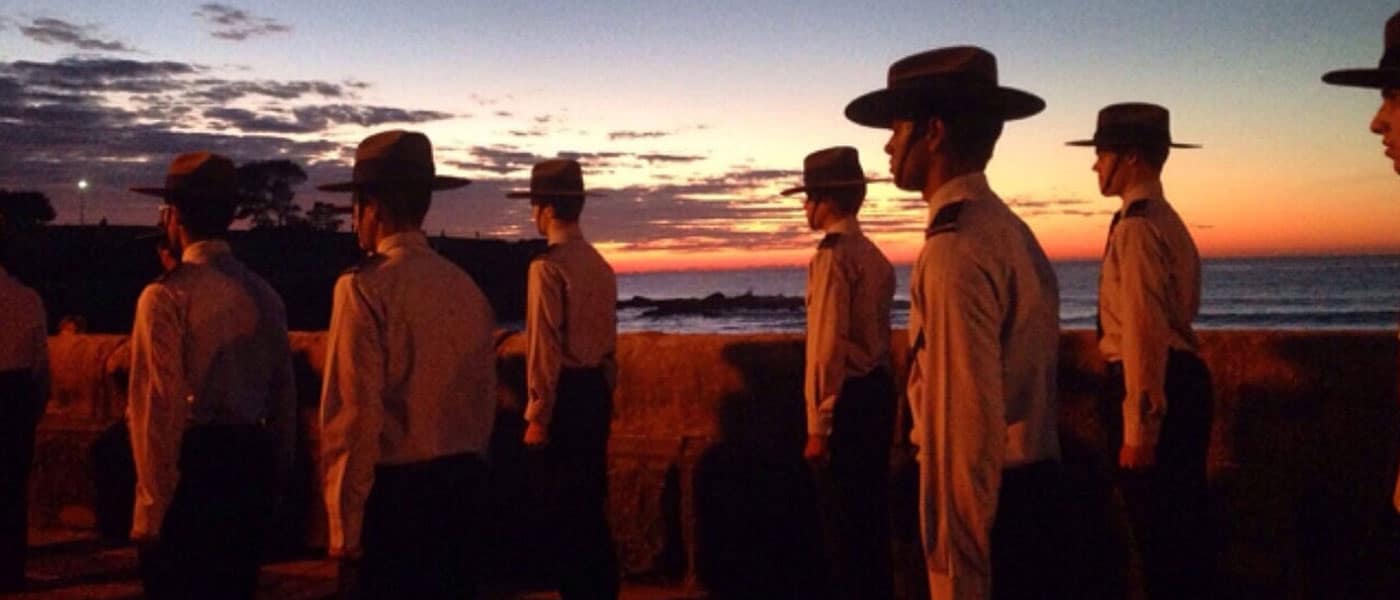
Can we celebrate Anzac Day without glorifying war?
Opinion + AnalysisRelationships
BY Matthew Beard The Ethics Centre 23 APR 2016
Michael Salter’s article on masculinity and the Anzac story asks important questions of the Anzac story in the Australian consciousness. He paints a compelling story of how militarism threatens to taint both the traditions of Anzac and modern Australian masculinity.
Salter points to William James’ calls for a “moral equivalent of war”. James sought a way to inspire young people to commit to their shared sense of duty without needing to rely on militarism and a general affection for war. It’s crucial, James believed, to provide a social narrative that drives citizens beyond the selfish “pleasure economy” wherein we forget tradition, civic duty and our responsibility to the community.
In today’s Australia, the Anzac story is a crucial aspect of that narrative.
James described the military character as a “pure piece of perfection”. It’s pretty easy to see echoes of this idea in the modern image of the Digger – sacrificial, loyal, hardy, well-humoured, and courageous. Everything a good Australian should be.
The problem is when this story cannot be separated from the military context – when the virtues of the warrior lead us to believe war itself is virtuous and intrinsically worthwhile. That’s what James (and Salter) mean by ‘militarism’ – the mentality that war is good because it teaches virtue.
It’s the threat of militarism that led James to call for a moral equivalent of war. Salter points to the difficult tension for a society that rallies around military stories and figures while also facing an epidemic of (male) violence against women. Is the threat of militarism too great for the Anzac ethos to overcome?
William James described the military character as a “pure piece of perfection”.
I’m not convinced. I think it makes a good case for expanding the kinds of stories we listen to in silent contemplation on Anzac Day, but it doesn’t follow the need to do away with the story altogether.
What we might need to do is counterbalance our social interest in the virtue and nobility of the warrior character (including, dare we say, the warrior ethos that lived in Australia for 40,000 or so years before Anzac) with some honest reflections about the reality of war.
A study compiled by McCrindle Research in 2015 – which Salter also cited – suggests more than a third of Australian men would sign up to a war equivalent to WWI if it occurred today. That should be concerning – for most nations involved in the conflict the ethical justifications are hazy. Just war theorist Nicholas Fotion says, “of the major powers to enter the war in 1914, Britain is the only one that does not constitute a difficult case”.
Given this, there is good reason to believe many Australians are confusing the always tragic, sometimes necessary ethics of just war theory with the idea that participating in war is always virtuous. Do they need to stop being taught about war or do they need to be informed of its tragic reality?
Perhaps we’ve remembered the valour of soldiers from decades ago while overlooking the testimony of many of Australia’s modern Anzacs.
According to some reports, former US President Theodore Roosevelt hoped his sons might lose a limb in war as a mark of valour. This militarism though, disappears somewhat from his later letters after his sons were injured. Although he still believes his sons fought with valour, he is more circumspect than what he may have been earlier.
And this presents us with a possible solution – to broaden our war stories to include the horror and suffering it inflicts alongside our praise for the valour and sacrifice of the Anzacs.
Perhaps we’ve remembered the valour of soldiers from decades ago while overlooking the testimony of many of Australia’s modern Anzacs. Those whose character has been profoundly affected by war in ways William James never imagined – PTSD, traumatic brain injury, homelessness, substance abuse, unemployment, family breakdown – also need to be thought of and reflected upon.
If the readiness to use force when necessary is indeed a virtue, it needs to incorporate a full understanding of the personal and moral costs of violence.
This serves the intended purpose of Anzac – to bear silent witness to the sacrifices of Australian military men and women. As an added bonus, it might counteract the rampant militarism James feared – and which might be infecting us more than we know.
Ethics in your inbox.
Get the latest inspiration, intelligence, events & more.
By signing up you agree to our privacy policy
You might be interested in…
Opinion + Analysis
Health + Wellbeing, Relationships
The truths COVID revealed about consumerism
Big thinker
Health + Wellbeing, Politics + Human Rights, Relationships
Big Thinker: Judith Butler
Big thinker
Politics + Human Rights, Relationships
Big Thinker: Adam Smith
Opinion + Analysis
Health + Wellbeing, Relationships
Anthem outrage reveals Australia’s spiritual shortcomings
BY Matthew Beard
Matt is a moral philosopher with a background in applied and military ethics. In 2016, Matt won the Australasian Association of Philosophy prize for media engagement. Formerly a fellow at The Ethics Centre, Matt is currently host on ABC’s Short & Curly podcast and the Vincent Fairfax Fellowship Program Director.
BY The Ethics Centre
The Ethics Centre is a not-for-profit organisation developing innovative programs, services and experiences, designed to bring ethics to the centre of professional and personal life.
Anzac Day: militarism and masculinity don’t mix well in modern Australia

Anzac Day: militarism and masculinity don’t mix well in modern Australia
Opinion + AnalysisHealth + WellbeingRelationships
BY Michael Salter The Ethics Centre 21 APR 2016
In 2016, the then Prime Minister Tony Abbott penned a passionate column on the relevance of Anzac Day to modern Australia. For Abbott, the Anzacs serve as the moral role models that Australians should seek to emulate. He wrote, “We hope that in striving to emulate their values, we might rise to the challenges of our time as they did to theirs”.
The notion that Anzacs embody a quintessentially Australian spirit is a century old. The official World War I journalist C.E.W. Bean wrote Gallipoli was the crucible in which the rugged resilience and camaraderie of (white) Australian masculinity, forged in the bush, was decisively tested and proven on the world stage.
At the time, this was a potent way of making sense out of the staggering loss of 8000 Australian lives in a single military campaign. Since then, it has been common for politicians and journalists to claim that Australia was ‘baptised’ in the ‘blood and fire’ of Gallipoli.
The dark side to the Anzac myth is a view of violence as powerful and creative.
However, public interest in Anzac Day has fluctuated over the course of the 20th century. Ambivalence over Australia’s role in the Vietnam War had a major role in dampening enthusiasm from the 1970s.
The election of John Howard in 1996 signalled a new era for the Anzac myth. The ‘digger’ was, for Prime Minister Howard, the embodiment of Australian mateship, loyalty and toughness. Since then, government funding has flowed to Anzac-related school curricula as well as related books, films and research projects. Old war memorials have been refurbished and new ones built. Attendance at Anzac events in Australia and overseas has swelled.
On Anzac Day, we are reminded how crucial it is for individuals to be willing to forgo self-interest in exchange for the common national good. Theoretically, Anzac Day teaches us not to be selfish and reminds us of our duties to others. But it does so at a cost. Because military role models bring with them militarism – which sees the horror and tragedy of war as a not only justifiable but desirable way to solve problems.
The dark side to the Anzac myth is a view of violence as powerful and creative. Violence is glorified as the forge of masculinity, nationhood and history. In this process, the acceptance and normalisation of violence culminates in celebration.
The renewed focus on the Anzac legend in Australian consciousness has brought with it a pronounced militarisation of Australian history, in which our collective past is reframed around idealised incidents of conflict and sacrifice. This effectively takes the politics out of war, justifying ongoing military deployment in conflict overseas, and stultifying debate about the violence of invasion and colonisation at home.
In the drama of militarism, the white, male and presumptively heterosexual soldier is the hero. The Anzac myth makes him the archetypical Australian, consigning the alternative histories of women, Aboriginal and Torres Strait Islanders, and sexual and ethnic minorities to the margins. I’d argue that for right-wing nationalist groups, the Anzacs have come to represent their nostalgia for a racially purer past. They have aggressively protested against attempts to critically analyse Anzac history.
Turning away from militarism does not mean devaluing the military or forgetting about Australia’s military history.
Militarism took on a new visibility during Abbott’s time as Prime Minister. Current and former military personnel have been appointed to major civilian policy and governance roles. Police, immigration, customs, and border security staff have adopted military-style uniforms and arms. The number of former military personnel entering state and federal politics has risen significantly in the last 15 years.
The notion that war and conflict is the ultimate test of Australian masculinity and nationhood has become the dominant understanding not only of Anzac day but, arguably, of Australian identity. Any wonder that a study compiled by McCrindle Research reveals that 34% of males, and 42% of Gen Y males, would enlist in a war that mirrored that of WWI if it occurred today.
This exaltation of violence sits uncomfortably alongside efforts to reduce and ultimately eradicate the use of violence in civil and intimate life. Across the country we are grappling with epidemic of violence against women and between men. But when war is positioned as the fulcrum of Australian history, when our leaders privilege force in policy making, and when military service is seen as the penultimate form of public service, is it any wonder that boys and men turn to violence to solve problems and create a sense of identity?
The glorification of violence in our past is at odds with our aspirations for a violence-free future.
In his writings on the dangers of militarism, psychologist and philosopher William James called for a “moral equivalent of war” – a form of moral education less predisposed to militarism and its shortcomings.
Turning away from militarism does not mean devaluing the military or forgetting about Australia’s military history. It means turning away from conflict as the dominant lens through which we understand our heritage and shared community. It means abjuring force as a means of solving problems and seeking respect. However, it also requires us to articulate an alternative ethos weighty enough to act as a substitute for militarism.
At a recent domestic violence conference in Sydney, Professor Bob Pease called for the rejection of the “militarisation of masculinity”, arguing that men’s violence in war was linked to men’s violence against women. At the same time, however, he called on us to foster “a critical ethic of care in men”, recognising that men who value others and care for them are less prone to violence.
For as long as militarism and masculinity are fused in the Australian imagination, it’s hard to see how this ethos of care can take root. It seems that the glorification of violence in our past is at odds with our aspirations for a violence-free future. The question is whether we value this potential future more than an idealised past.
Ethics in your inbox.
Get the latest inspiration, intelligence, events & more.
By signing up you agree to our privacy policy
You might be interested in…
Opinion + Analysis
Health + Wellbeing, Relationships
Academia’s wicked problem
Big thinker
Relationships
Big Thinker: Sally Haslanger
Opinion + Analysis
Relationships
On saying “sorry” most readily, when we least need to
Opinion + Analysis
Business + Leadership, Relationships, Society + Culture

